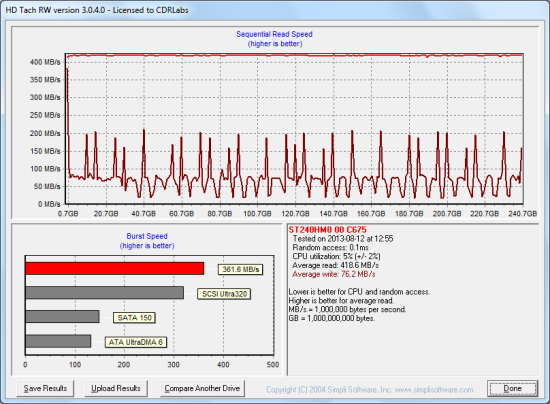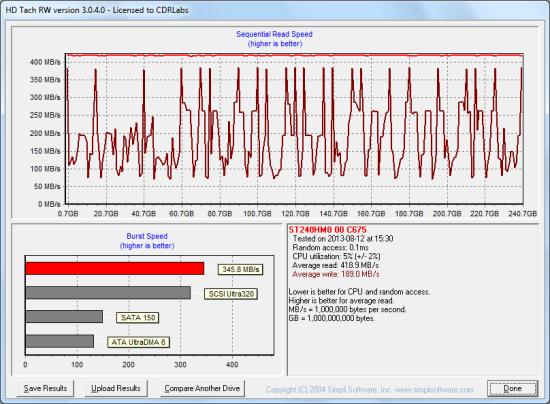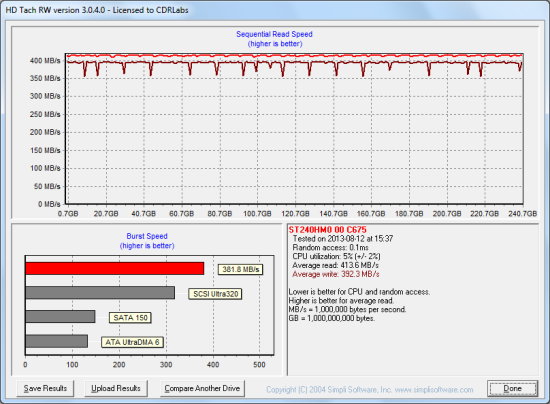TRIM Performance:
While SSD's offer many benefits, there are some downsides to using flash memory. One of the biggest issues people run into is performance degradation. Over time, an SSD will run out of fresh blocks and will have to write over data the file system has marked as deleted. This procedure is very complicated and can slow an SSD's write speeds considerably.
To fix this problem, most manufacturers have added TRIM support to their SSDs. The TRIM command allows an operating system, such as Windows 7, to tell an SSD which data blocks are no longer in use. Using this information, the drive pro-actively erases these blocks and adds them to the free block pool.

To test the 600 SSD's TRIM function, I first put the drive in a "dirty" state. I used Iometer to fill the entire drive and then ran a random write test for 30 minutes. This had very little effect on the 600 SSD's read speed. However, its average write speed dropped to 76.2 MB/s.

Seagate 600 SSD - Dirty
To see how well the 600 SSD could recover, I let the computer sit for about two and a half hours and then reran the test. The drive wasn't able to reach the factory fresh performance shown in our earlier tests. However, its average write speed climbed up to 189.0 MB/s.

Seagate 600 SSD - After TRIM
Lastly, I used Parted Magic to perform a secure erase on the 600 SSD. With the drive wiped clean, it had average read and write speeds of 413.6 MB/s and 392.3 MB/s, respectively.

Seagate 600 SSD - Secure Erase
Final Thoughts:
With the 600 SSD, Seagate has made its long awaited entrance into the consumer solid state drive market. This thin, yet rugged, drive combines Link A Media Devices' (LAMD) LM87800 controller with Toshiba's 19nm Toggle mode MLC NAND flash to deliver a fast and responsive computing experience. In our sequential read and write tests, the 600 SSD was able to read at speeds as high as 555 MB/s and write at speeds in excess of 460 MB/s. It also did reasonably well our random write tests, producing more than 75,000 IOPS at low queue depths. Increasing the queue depth did lead to better results. However, the 600 SSD still had a hard time keeping up with drives like the Samsung 840 Pro.
Samsung's 600 SSD is available now in 120GB, 240GB and 480GB capacities. Prices on Amazon.com currently range from $110 up to $410, with the 240GB version reviewed here going for about $210.
Highs:
- Available in 120GB, 240GB and 480GB capacities
- Link A Media Devices (LAMD) LM87800 controller
- Good sequential and random read and write performance
- Performs equally well with compressible and incompressible data
- Rugged, ultra-slim design
- SATA 6Gb/s interface
- Toggle Mode NAND flash
- Large DRAM cache
- Supports TRIM, SMART and NCQ
- Available in both 7mm and 5mm z-heights
- Reasonably priced
- 3 year warranty
Lows:
- OEM packaging does not include any accessories
- Does not support hardware based encryption

